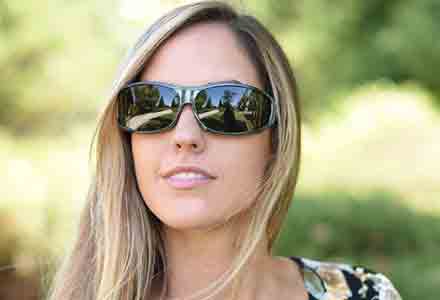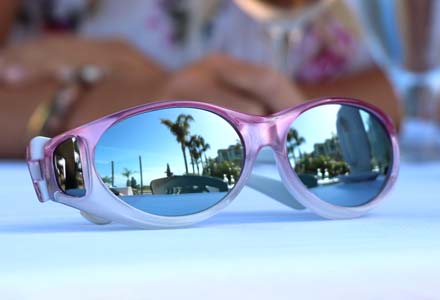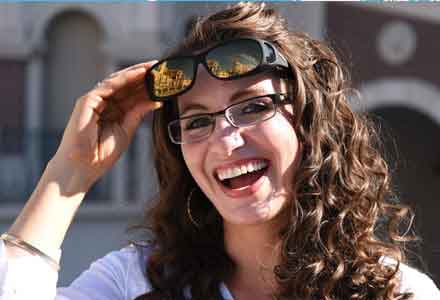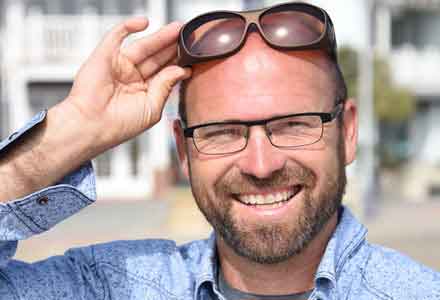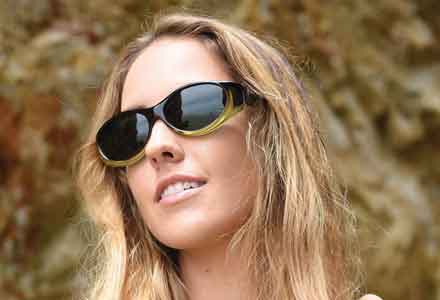Cocoons Fitovers, Eye Health, Lifestyle, Technology, Visual Performance
Screen Time, Blue Light Exposure, and Maintaining Eye Health
Last night while I was setting sail into the sweet waters of slumber, my neighbor was stretching, cracking his knuckles, getting ready for the little midnight piano recital he was about to treat my block to. The scene unfolded as follows: a hill tucked in fog; a row of quiet homes; an explosion into Vanessa Carlton’s “A Thousand Miles”—two human hands just moving as fast as their fingers would allow. Being yanked awake but not (quite) curmudgeonly enough to ask this neighbor to kindly close the lid of that piano right onto his fingertips, I decided to see what was happening in the world of social media.
And maybe you’ve used your phone in the dark before, like at night or first in the morning (like 81% and 89% of people do, respectively (Deloitte)), and so maybe you know how it feels like pouring instant lemonade powder into your eyeballs. All the colors, all that light just tearing out of the darkness—unsurprisingly enough, this is not a healthy thing for your eyes; it’s just one of many activities that floods our eyes with High Energy Visible (HEV) blue light, which we’re finding out produces many adverse effects on our eyes and bodies.
Odds are you’ve heard of or read about blue light; it’s a big issue right now in the conversation surrounding digital screen technology and eye health. Basically, it’s a type of light that our eyes’ corneas and lenses cannot reflect or block well. The stuff is virtually everywhere naturally: it makes the sky look blue, regulates our circadian rhythms, and can even boost our alertness and mood. Artificial blue light, however—found in things like computers, flat screen TVs, LED lightbulbs and headlights, phones, and tablets—is relatively new for us in the high dosages we’re exposed to it, and professionals in technological and eye care industries are researching and finding out more about how it operates.
We’ve known about blue light in a technological context for a while now. We’ve known an overexposure to blue light messes with our sleep and causes eyestrain and fatigue, and we’ve known it can induce migraines and contribute to age-related macular degeneration—we just haven’t known exactly why. However, a team of researchers at The University of Toledo (UT) has changed that; they believe they’ve figured out how blue light reacts with our eyes to increase the risk of macular degeneration, and the team hopes they can use the information they’ve gained to come up with innovative treatments for the disease.
Dr. Ajith Karunarathne and his team, according to UT News, found that exposure to blue light triggers chemical reactions in retinal molecules (which allow photoreceptor cells to sense light) that “generate poisonous chemical molecules in photoreceptor cells.” These “toxic” molecules in turn kill the photoreceptor cells, contributing to macular degeneration (UT News). Since our eyes cannot regenerate photoreceptor cells, this is a chronic condition and a problem for many, affecting over 10 million Americans (American Macular Degeneration Foundation). (For a far more detailed description of these processes, I highly recommend you read the UT News article.)
Like I said earlier, however, the hope is that Dr. Karunarathne’s breakthroughs with toxic retinal molecules will allow for the development of new treatments for macular degeneration, a condition we’ve typically seen arise in people’s 50s and 60s. If blue light exposure is really as much of a factor in macular degeneration as Dr. Karunarathne’s study might imply, it stands to reason that we might want to seriously consider how and how often we’re looking at screens. Especially for younger generations growing up in front of this technology, treatments could be crucial for keeping eyes healthy. In the meantime, there are measures we can take to help our eyes, even when we have to be on the computer or on our phones for prolonged periods of time.
First off, when you’re working on the computer for a prolonged period of time, try using the 20-20-20 Rule. Every 20 minutes, that is, look away from your screen at something 20 feet away for at least 20 seconds. That’ll give your eyes time to relax and flex some different muscles, so to speak. Better yet, get up and drink some water when you do this or every once in a while; we all know how good hydration is for you, but its effects on the eyes are often overlooked.
Another way to reduce eye damage as well as sleep cycle alteration is to avoid using your phone or computer in the dark, as I neglected to do last night. In such situations, the devices’ light levels (and thus blue light levels) are often amplified in the screen for an optimal display. The brightness, of course, can be uncomfortable. Moreover, remember how blue light regulates our circadian rhythms? When we’re exposed to blue light, we unconsciously think “sun and daylight”; thus, our devices suppress melatonin production, telling us to “wake up” at night, which throws off our sleep cycles. Research indicates you should stop using your phone 2-3 hours before bed (Invision). If you must use your phone or computer at night or in the dark, you can turn the brightness down or install an app like f.lux, which softens the light on your screen as the sun goes down so that (a) your screen is easier on your eyes and (b) the blue light from your screen doesn’t throw off your sleep cycle.
The sleep cycle problems are where everyone researching blue light effects seem to agree—they’re well documented. Some researchers argue, however, that to say Dr. Karunarathne’s findings definitively indicate that blue light exposure hastens age-related macular degeneration is to take things a little too far. Dr. Karl Citek, for example, claims that what this study reiterates is the general harm of UVA and B exposure, coming in (as we’ve discussed before) intense amounts from the sun and itself containing blue light.
We should all indeed be wearing sunglasses, but to help reduce the digital eye strain and sleep loss commonly associated with blue light overexposure, Live Eyewear offers a collection of Cocoons fitovers featuring a patented HEV blue light filter system designed to reduce overexposure to harmful high energy visible blue light. Not only do the lenses filter 100% of UV light and up to 60% of blue light with a specially-formulated tint, they also feature an anti-reflective coating to reduce glare and halos generated by artificial light sources. We’ve integrated all of this preventative technology into our famous Cocoons frame, which longtime wearers will know provides comfort and durability unrivaled by any other fitover. At a fraction of the price of prescription eyewear with HEV filter technology, the Cocoons Computer Fitover collection delivers a simple and effective solution to protecting your eyes from harmful blue light.
Nowadays, Americans spend around ten hours a day in front of a screen (CNN), exposed to blue light all the while. I’m very optimistic about the good that technology can do, and I’ve taken pains to make sure no part of this post comes across as technophobic. This isn’t a “chuck your phone and get off the grid” kind of operation; the access to information and connection we now have at our fingertips is tremendously important and downright inspiring. This website alone has allowed thousands and thousands of people to receive the tools they need to stay active, healthy, and safe. However, there are indeed growing pains that occur with the integration of any new technology into daily life. What I hope to call for here–and what I think general reaction to Dr. Karunarathne’s findings shows people are looking for–is a mindful, healthy, and safe engagement with our technologies.
The fact that we’re even having this conversation is all good news, in other words. We’re learning new things about technologies we use, and we’re developing tools to make working with them healthier. And even if some of us happen to be doing so with an impossibly catchy piano hook rattling around in our sleep-deprived skulls, it’s all forward motion.
References:
American Macular Degeneration Foundation: https://www.macular.org/what-macular-degeneration
CNN: https://www.cnn.com/2016/06/30/health/americans-screen-time-nielsen/index.html
Invision: https://invisionmag.com/don-t-believe-the-blue-light-hype-eye-doctors-say
UT News: http://utnews.utoledo.edu/index.php/08_08_2018/ut-chemists-discover-how-blue-light-speeds-blindness





